|
Displaying items by tag: looted
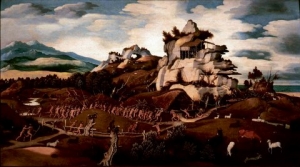
The Rijksmuseum in The Netherlands has purchased one of the earliest depictions of America in the history Western art. Discovery America by the Dutch Renaissance painter Jan Mostaert (circa 1475—1555/56) was created between 1525 and 1540 and features a made-up scene of Spanish aggressors firing cannons and rifles at indigenous people who are armed with bows and arrows.
Discovery America, which is also known as Episode from the Conquest of America, was one of 202 paintings returned to the daughter-in-law of Jacques Goudstikker, a Jewish art dealer whose collection was plundered by the Nazis. Following World War II, the painting was displayed in the Frans Hals Museum in Haarlem until Goudstikker’s heirs demanded that the work be handed over to the family in 2006. Goudstikker’s daughter-in-law approached the Rijksmuseum about purchasing the painting earlier this year. Nathan and Simon Dickinson Gallery, which has headquarters in New York and London, brokered the sale. The gallery had brought the painting to the European Fine Art Fair in Maastricht in March where they asked $14 million for the masterpiece.
Discovery America’s importance is bolstered by the fact that it is one of the oldest Dutch paintings mentioned in the definitive Dutch art history book, Het Schilder-boeck from 1605.
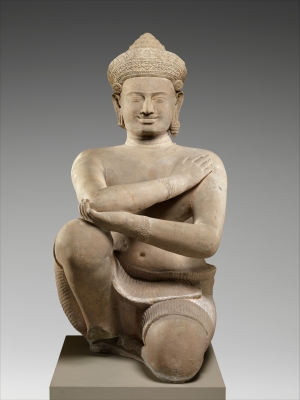
Two 10th century statues that were looted from jungle temples have been returned to Cambodia by the Metropolitan Museum of Art. The Met announced in May 2013 that they would send the Khmer sculptures known as Kneeling Attendants back to Cambodia after being displayed in the museum’s Asian Wing for 10 years.
Hab Touch, director general at the Ministry of Culture, said, “The return of the statues is a historic event for us.” Seven Buddhist monks blessed the life-size statues during a religious ceremony attended by officials from the government and the Met at the airport. Upon their return to Cambodia, the sculptures will be put on display at the Peace Palace in Phnom Penh and later kept at either the National Museum in the capital or at a museum in the northwestern city of Siem Reap.
The two statues were looted from the Koh Ker temple site in the early 1970s. At the time, Cambodia was being ravaged by a brutal civil war and looting was rampant. The works were donated piece by piece to the Met in the late 1980s and 1990s. Recent documentary research revealed that the statues were in fact looted from Cambodia.
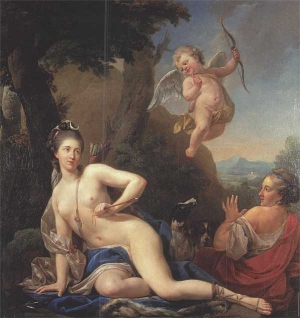
When Steven Brooks, a collector of Old Master paintings, purchased Louis-Michel van Loo’s Allegorical Portrait of a Lady as Diana Wounded by Cupid from Sotheby’s in 2004, he was unaware that the work was once owned by the German war criminal Hermann Goering. After it surfaced that Nazis possibly looted the work, Brooks deemed the painting worthless and decided to sue Sotheby’s for not thoroughly researching the work’s provenance.
The painting’s problematic past was revealed when Brooks tried to sell the painting at Christie’s in 2010. Specialists at the auction house discovered that Goering had purchased the painting in 1939, leading Christie’s to decline the offer to sell Portrait of a Lady on behalf of Brooks. Brooks’ lawsuit claims that Sotheby’s also refused to auction the work and won’t refund the nearly $90,000 he spent on the painting in 2004.
While there is no solid proof that the work was looted by Nazis, the uncertainty surrounding the painting makes it unsalable and in turn, monetarily worthless. Sotheby’s 2004 catalogue lacked any information on the painting between 1906 and 1987 and Christie’s was unable to determine anything other than the fact that Goering once owned the work. It is typical for private dealers to avoid works whose ownership cannot be traced between 1933, when the Nazis came to power, and 1945, when World War II ended, because of potentially problematic provenances.
There are currently no claimants for van Loo’s Allegorical Portrait of a Lady as Diana Wounded by Cupid.
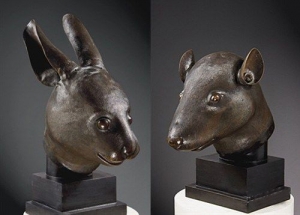
Francois-Henri Pinault, a French billionaire and CEO of the luxury-goods brand, Kering (formerly PPR), has announced that he will return a pair of Qing dynasty bronze statues to China. The looted bronzes were part of a 2009 auction at Christie’s in Paris that sparked a campaign in China aimed at putting an end to intimidation by foreign powers. Officials from Beijing have applauded Pinault’s efforts to create a more camaraderie-focused dynamic between France and China. Pinault is the owner of the Artemis Group, Christie’s holding company.
The works to be returned to China are the bronze heads of a rat and a rabbit, which were part of a group of 12 animal heads that were looted from Beijing’s Summer Palace by French and British troops in 1860 during the Second Opium War. Since emerging as a powerful international force in recent years, China has been campaigning for the return of the works. Five of the bronzes have been given back to China and one is in Taiwan while the whereabouts of the remaining four pieces remain a mystery.
The bronzes being returned to China by Pinault were previously owned by French fashion designer Yves Saint Laurent and were put up for auction in 2009 following his death. Chinese officials voiced opposition at the time of the sale and an advisor to a Chinese government fund placed the winning bid on the bronzes but never ended up paying for them. The works were returned to Pierre Berge, Saint Laurent’s former partner.
Pinault is working with the Cultural Heritage Administration to get the bronzes back to China as quickly as possible. The decision is a clever move on Pinault’s part as his businesses, which include Gucci and Puma, have been thriving in China’s growing consumer economy.
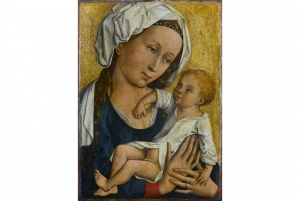
Germany’s Staatsgalerie Stuttgart museum returned a 15th century Renaissance painting stolen by Nazis during World War II to the estate of a Jewish art dealer. The museum acquired Virgin and Child, which is attributed to the Master of Flémalle (1375-1444) who is identified by historians as Robert Campin, in 1948.
The painting once belonged to Max Stern (1904-1987) who lost over 400 paintings to the Nazi regime during a forced sale in 1937. After Jews were banned from selling art in Nazi-occupied Europe, Stern shuttered his Dusseldorf gallery and escaped to London in December of the same year. Before settling in Montreal, Stern sold even more paintings, including Virgin and Child, in order to buy a German exit visa for his mother. Stern went on to purchase the Dominion Gallery of Fine Arts and established himself as one of Canada’s most important art dealers and collectors.
Upon his death in 1987, Stern donated a portion of his estate to Concordia and McGill Universities in Montreal as well as the Hebrew University in Jerusalem. For the past ten years Concordia has been working to recover the hundreds of paintings Stern lost at the hands of the Nazis. The initiative, known as the Max Stern Art Restitution Project, has facilitated the return of 9 works originally belonging to Stern; Virgin and Child is the 10th and the only work to be returned from a German museum thus far.
A ceremony was held on Tuesday, March 5, 2013 at the Canadian Embassy in Berlin to celebrate the painting’s return.
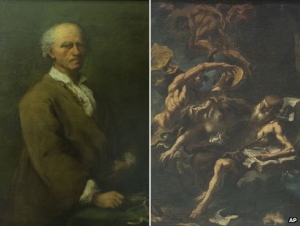
France will return seven paintings stolen from their Jewish owners by Nazis during World War II, part of an ongoing effort to give back hundreds of plundered works that still hang in French institutions including the Louvre. The seven paintings were all stolen or sold under duress as their owners fled Europe during the Nazi occupation. The works were to be displayed in Adolf Hitler’s art gallery, which he planned to build in his birthplace in Austria but never came to fruition.
At the end of World War II, with most of Europe in shambles, many artworks were left unclaimed and thousands of French-owned works found homes in the France’s various museums. Government efforts to return these works gained steam last year at the urging of the owners’ families. The French government believes that there are approximately 2,000 Nazi looted artworks in state institutions; inaccurate archiving and the challenge of properly identifying paintings has made the restitution process a long one.
Six of the seven works to be returned were owned by Richard Neumann, an Austrian Jew who sold his remarkable art collection for a fraction of its value in order to flee Europe. His collection included works by Alessandro Longhi (1733-1831), Sebastiano Ricci (1659-1734), and Gaspare Diziani (1689-1767). The paintings were ultimately placed in the Louvre, the Museum of Modern Art of Saint-Etienne, the Agen Fine Arts Museum, and the Tours Fine Art Museum after the war.
The other painting to be returned is Pieter Jansz Van Asch’s (1603-1678) The Halt, which was stolen by the Gestapo in Prague in 1939 from Josef Wiener, a Jewish banker who was deported and later died in a concentration camp. The Dutch masterpiece hung in the Louvre for years until Van Asch’s family tracked it down online in the mid-2000s. The French Prime Minister, Francois Fillon, approved the return of the painting to the family last year.
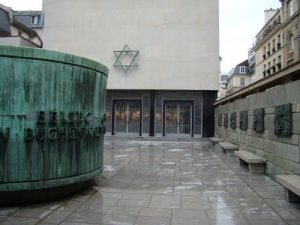
French senator Corinne Bouchoux is urging French museum officials to take closer looks at their prized holdings as many public art collections contain works looted by Nazis during World War II. Bouchoux has led an investigative committee devoted to uncovering Nazi-looted artwork in France, which prompted her to ask museums to be more thorough in their provenance research.
Bouchoux revealed that out of the 100,000 artworks stolen from Jewish families in France and Belgium, approximately 2,000 of those works were still present in French museums. Many of these museums were designated “national museums of recovery,” which allowed the institutions to keep the works as long as they did not become property of the state and if identified, the rightful owners could reclaim them.
Bouchoux wrote her doctoral thesis, which has just been published as a book, on Nazi-looted art in France and has suggested nine proposals to direct the stolen works back to their rightful owners or offer restitution for them.
In line with Bouchoux’s efforts, the Shoal Memorial in Paris presents the exhibition Looting of the Jews: A State Policy (1940-44), which grants visitors a glimpse of the goods, including artworks, that originally belonged to Jews in France. The show is on view through September 29, 2013.
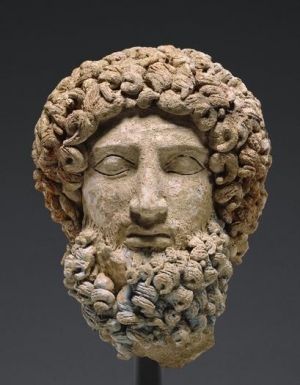
For years, Italy, Greece, and other ancient lands have accused American museums of ignoring evidence that antiquities in their collections were looted from archaeological sites. Five years ago, the Association of Art Museum Directors (AAMD) responded by making the requirements for acquiring ancient works much more stringent. The revised guidelines advised American museums against acquiring works unless solid proof existed that the artifact, prior to 1970, was outside the country where it was discovered in modern times, or was legally exported from that country after 1970.
1970 remains an important date, as it marks the year UNESCO put a stop to the illicit trafficking of antiquities. The year is now regarded as the standard cutoff for collecting. Works that appear on the market without documentation dating back that far are much more likely to have been stolen, looted, or smuggled out of their countries.
On Wednesday, January 30, 2013 the AAMD announced a few additional restrictions for American museums. The AAMD, which has 217 member museums in North America, now requires institutions to post a public explanation on the AAMD’s website if they acquire any ancient works with spotty ownership records. In addition, the museum much provide an image of the object, any known provenance information, and an explanation as to why they decided to acquire the work. If an institution fails to comply, they will be subject to ethical scrutiny and possible expulsion from the AAMD.
Officials hope that the tighter acquisition regulations will discourage American museums from obtaining questionable artifacts while supporting transparency between the United States and nations of origin who may lay claim to the antiquities.
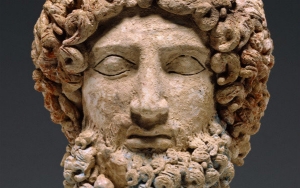
The J. Paul Getty Museum in Los Angeles will return a terracotta head depicting the Greek god Hades to Sicily. The museum has been working with Italian officials for two years to decide whether or not the artifact should be returned. The Getty purchased the terracotta head from New York collector Maurice Tempelsman for $530,000 in 1985. Tempelsman had originally acquired the piece from the disgraced antiquities dealer Robin Symes.
Officials determined that the terracotta head was originally located in Sicily at a sanctuary site for the goddess Demeter and her daughter Persephone. The piece’s provenance was discovered by comparing the head to four terracotta fragments found near the famous and highly looted archaeological site Morgantina in Sicily. It soon came to light that the head was illegally excavated from Morgantina in the early 1970s.
The Getty entered into an agreement with Italy’s Ministry of Culture in 2007 after a long legal battle regarding looted works and the museum’s former curator, Marion True. The Getty now has connections in various parts of Italy to facilitate cultural exchange and has been working closely with Sicilian officials since 2010.
The head of Hades will be on view at the Getty Villa as part of the exhibition The Sanctuaries of Demeter and Persephone at Morgantina through January 21, 2013. The work will then join the Getty-organized traveling exhibition Sicily: Art and Invention between Greece and Rome before being placed in Sicily’s Museo Archeologico.
The Toledo Museum of Art in Ohio returned a ceramic water vase, which depicts the Greek god, Dionysus turning pirates into dolphins, to the Italian government on Tuesday, January 9, 2013. The jug, which dates back to the sixth century BC, was likely looted from Italian soil years ago.
The Toledo Museum of Art purchased the jug in 1982 from art dealers who used falsified documents to hide the object’s dishonest past. Investigators revealed that the jug was smuggled out of Italy after it was illegally excavate sometime before 1981.
The United States Immigration and Customs Enforcement Agency announced that the Estruscan black-figure kalpis, which is valued at $665,000, was handed back to Italian officials following a ceremony held at the museum. While Italy currently holds reign over the work, the jug will remain on view in the museum’s Libbey Court until it leaves for Rome in late summer of this year.
|
|
|
|
|